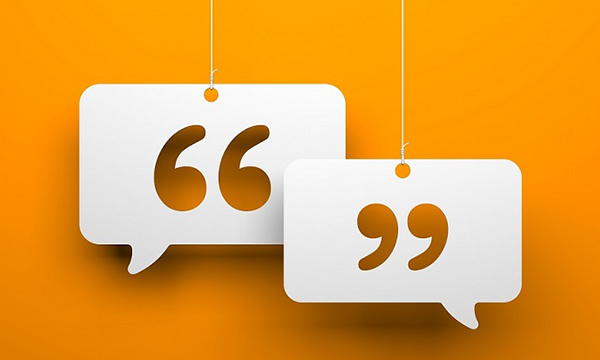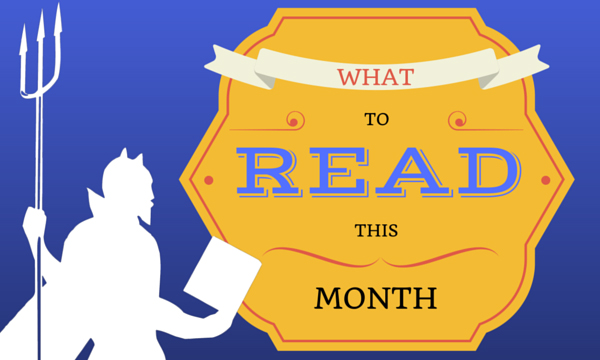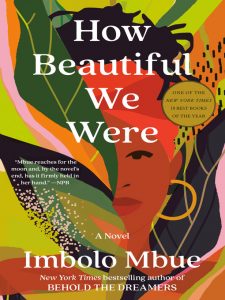
The 5 Titles series highlights books, music, and films in the library’s collection featuring topics related to diversity, equity, inclusion, and/or highlighting the work of authors from diverse backgrounds. Each post is intended to briefly sample titles rather than provide a comprehensive topic overview. This month, the five titles have been selected by Graduate Humanities Intern Rebekah Cowell.
Audre Lorde wrote, “There is no thing as a single-issue struggle because we do not live single-issue lives.” Discussing social justice issues without including disability justice and its intersections with race, sexuality, gender, and socioeconomic class is impossible. According to 2015-2016 data from the U.S. Department of Education, over 19 percent of all enrolled undergraduate students and 11.9 percent of post-baccalaureate students self-identified as having a disability. In higher education, disability justice is another access point to achieving Diversity, Equity, and Inclusion. Disability at Duke is a robust student and faculty collaboration bringing disability justice and pedagogy together. These five titles selected for consideration come from Duke University Libraries and feature the lived experiences of activists who have fought and continue to fight for disability justice.
 Year of the Tiger: An Activist’s Life by Alice Wong. In Chinese culture, the tiger is deeply revered for its confidence, passion, ambition, and ferocity. Drawing on a collection of original essays, previously published work, conversations, graphics, photos, commissioned art by disabled and Asian American artists, and more, Alice uses her unique talent to share an impressionistic scrapbook of her life as an Asian American disabled activist, community organizer, media maker, and dreamer. From her love of food and pop culture to her unwavering commitment to dismantling systemic ableism, Alice shares her thoughts on creativity, access, power, care, the pandemic, mortality, and the future. As a self-described disabled oracle, Alice traces her origins, tells her story, and creates a space for disabled people to be in conversation with one another and the world. Alice is the founder and director of the Disability Visibility Project and the editor of the acclaimed anthology Disability Visibility.
Year of the Tiger: An Activist’s Life by Alice Wong. In Chinese culture, the tiger is deeply revered for its confidence, passion, ambition, and ferocity. Drawing on a collection of original essays, previously published work, conversations, graphics, photos, commissioned art by disabled and Asian American artists, and more, Alice uses her unique talent to share an impressionistic scrapbook of her life as an Asian American disabled activist, community organizer, media maker, and dreamer. From her love of food and pop culture to her unwavering commitment to dismantling systemic ableism, Alice shares her thoughts on creativity, access, power, care, the pandemic, mortality, and the future. As a self-described disabled oracle, Alice traces her origins, tells her story, and creates a space for disabled people to be in conversation with one another and the world. Alice is the founder and director of the Disability Visibility Project and the editor of the acclaimed anthology Disability Visibility.
 Care Work: Dreaming Disability Justice by Leah Lakshmi Piepzna-Samarasinha. A personal collection about creating spaces by and for sick and disabled queer people of colour and creative “collective access” — access not as a chore but as a collective responsibility and pleasure — in our communities and political movements. They write, “When we do disability justice work, it becomes impossible to look at disability and not examine how colonialism created it. It becomes a priority to look at Indigenous ways of perceiving and understanding disability…” Bringing their survival skills and knowledge from years of cultural and activist work, she explores everything from the economics of queer femme emotional labor to suicide in queer and trans communities to the nitty-gritty of touring as a sick and disabled queer artist of colour. Care Work is a mapping of access as radical love, a celebration of the work that sick and disabled queer/people of colour are doing to find each other and to build power and community, and a toolkit for everyone who wants to build radically resilient, sustainable communities of liberation where no one is left behind.
Care Work: Dreaming Disability Justice by Leah Lakshmi Piepzna-Samarasinha. A personal collection about creating spaces by and for sick and disabled queer people of colour and creative “collective access” — access not as a chore but as a collective responsibility and pleasure — in our communities and political movements. They write, “When we do disability justice work, it becomes impossible to look at disability and not examine how colonialism created it. It becomes a priority to look at Indigenous ways of perceiving and understanding disability…” Bringing their survival skills and knowledge from years of cultural and activist work, she explores everything from the economics of queer femme emotional labor to suicide in queer and trans communities to the nitty-gritty of touring as a sick and disabled queer artist of colour. Care Work is a mapping of access as radical love, a celebration of the work that sick and disabled queer/people of colour are doing to find each other and to build power and community, and a toolkit for everyone who wants to build radically resilient, sustainable communities of liberation where no one is left behind.
 Exile and Pride by Eli Clare. Exile and Pride is essential to the history and future of disability politics. With a poet’s devotion to truth and an activist’s demand for justice, Clare deftly unspools the multiple histories from which our ever-evolving sense of self unfolds. His essays weave together memoir, history, and political thinking to explore meanings and experiences of home: home as place, community, bodies, identity, and activism. Here readers will find an intersectional framework for understanding how we actually live with the daily hydraulics of oppression, power, and resistance. At the root of Clare’s exploration of environmental destruction and capitalism, sexuality and institutional violence, gender and the body politic, is a call for social justice movements that are truly accessible to everyone. With heart and hammer, Exile and Pride pries open a window onto a world where our whole selves, in all their complexity, can be realized, loved, and embraced.
Exile and Pride by Eli Clare. Exile and Pride is essential to the history and future of disability politics. With a poet’s devotion to truth and an activist’s demand for justice, Clare deftly unspools the multiple histories from which our ever-evolving sense of self unfolds. His essays weave together memoir, history, and political thinking to explore meanings and experiences of home: home as place, community, bodies, identity, and activism. Here readers will find an intersectional framework for understanding how we actually live with the daily hydraulics of oppression, power, and resistance. At the root of Clare’s exploration of environmental destruction and capitalism, sexuality and institutional violence, gender and the body politic, is a call for social justice movements that are truly accessible to everyone. With heart and hammer, Exile and Pride pries open a window onto a world where our whole selves, in all their complexity, can be realized, loved, and embraced.
 Haben: The Deafblind Woman that Conquered Harvard Law by Haben Girma. Haben is a human rights lawyer advancing disability justice. She believes disability is an opportunity for innovation and teaches organizations the importance of choosing inclusion. Haben grew up spending summers with her family in the enchanting Eritrean city of Asmara. There, she discovered courage as she faced off against a bull she couldn’t see and found in herself an abiding strength as she absorbed her parents’ harrowing experiences during Eritrea’s thirty-year war with Ethiopia. Their refugee story inspired her to embark on a quest for knowledge, traveling the world in search of the secret to belonging. Haben defines disability as an opportunity for innovation. She learned non-visual techniques for everything from dancing salsa to handling an electric saw. She developed a text-to-braille communication system that created an exciting new way to connect with people. Haben pioneered her way through obstacles, graduated from Harvard Law, and now uses her talents to advocate for people with disabilities.
Haben: The Deafblind Woman that Conquered Harvard Law by Haben Girma. Haben is a human rights lawyer advancing disability justice. She believes disability is an opportunity for innovation and teaches organizations the importance of choosing inclusion. Haben grew up spending summers with her family in the enchanting Eritrean city of Asmara. There, she discovered courage as she faced off against a bull she couldn’t see and found in herself an abiding strength as she absorbed her parents’ harrowing experiences during Eritrea’s thirty-year war with Ethiopia. Their refugee story inspired her to embark on a quest for knowledge, traveling the world in search of the secret to belonging. Haben defines disability as an opportunity for innovation. She learned non-visual techniques for everything from dancing salsa to handling an electric saw. She developed a text-to-braille communication system that created an exciting new way to connect with people. Haben pioneered her way through obstacles, graduated from Harvard Law, and now uses her talents to advocate for people with disabilities.
 Being Heumann: An Unrepentant Memoir of a Disability Rights Activist by Judith Heumann. One of the most influential disability rights activists in US history tells her personal story of fighting for the right to receive an education, have a job, and just be human. A story of fighting to belong in a world that wasn’t built for all of us and of one woman’s activism–from the streets of Brooklyn and San Francisco to inside the halls of Washington– Being Heumann recounts Judy Heumann’s lifelong battle to achieve respect, acceptance, and inclusion in society. Paralyzed from polio at eighteen months, Judy’s struggle for equality began early in life. From fighting to attend grade school after being described as a “fire hazard” to later winning a lawsuit against the New York City school system for denying her a teacher’s license because of her paralysis, Judy’s actions set a precedent that fundamentally improved rights for disabled people. As a young woman, Judy rolled her wheelchair through the doors of the US Department of Health, Education, and Welfare in San Francisco as a leader of the Section 504 Sit-In, the longest takeover of a governmental building in US history. Working with a community of over 150 disabled activists and allies, Judy successfully pressured the Carter administration to implement protections for disabled peoples’ rights, sparking a national movement and leading to the creation of the Americans with Disabilities Act.
Being Heumann: An Unrepentant Memoir of a Disability Rights Activist by Judith Heumann. One of the most influential disability rights activists in US history tells her personal story of fighting for the right to receive an education, have a job, and just be human. A story of fighting to belong in a world that wasn’t built for all of us and of one woman’s activism–from the streets of Brooklyn and San Francisco to inside the halls of Washington– Being Heumann recounts Judy Heumann’s lifelong battle to achieve respect, acceptance, and inclusion in society. Paralyzed from polio at eighteen months, Judy’s struggle for equality began early in life. From fighting to attend grade school after being described as a “fire hazard” to later winning a lawsuit against the New York City school system for denying her a teacher’s license because of her paralysis, Judy’s actions set a precedent that fundamentally improved rights for disabled people. As a young woman, Judy rolled her wheelchair through the doors of the US Department of Health, Education, and Welfare in San Francisco as a leader of the Section 504 Sit-In, the longest takeover of a governmental building in US history. Working with a community of over 150 disabled activists and allies, Judy successfully pressured the Carter administration to implement protections for disabled peoples’ rights, sparking a national movement and leading to the creation of the Americans with Disabilities Act.
























 Yellowface
Yellowface











































































